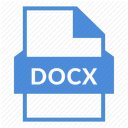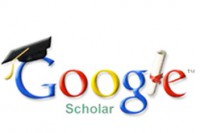Evaluating The CLT-Ness Of Bahasa Inggris Untuk SMA/ MA/SMK/MAK Kelas X Semester 1 Coursebook For Secondary School Students In Indonesia
DOI:
https://doi.org/10.18196/ftl.113Keywords:
Keywords, materials, evaluation, CLT-ness, coursebookAbstract
Materials and methodology play a significant role in a language classroom. These two elements need to be in line with each other to help achieve the shared learning goals. One of the method- ologies that have been widely employed, but still not well-permeated among teachers in Indonesia is Communicative Language Teaching (CLT). However, not many studies on seeing the relationship between methodology and materials have been conducted. To bridge this gap, this study aims to evaluate the CLT-ness of the national course book Bahasa Inggris untuk SMA/MA/SMK/MAK Kelas X Semester 1. To conduct the evaluation, a checklist adapted from Grant’s and Cunningsworth’s was employed as an evaluation tool. The research findings indicate that while the coursebook made a clear attempt to uphold CLT, as observed from its learning goals for each chapter and the coursebook introduction, several aspects of the coursebook, such as the tasks and activities, needed to be improved.
References
Buendgens-Kosten, J. (2014). Authenticity. ELT Journal, 68(4), 457-459.
Brandl, K. (2007). Communicative Language Teaching in Action: Putting principles to work. New Jersey: Prentice Hall.
Choi, Y. H., & Lee, H. W. (2008). Current trends and issues in English language education in Asia. The Journal of Asia TEFL, 5(2), 1-34.
Clavel-Arroitia, B., & Fuster-Márquez, M. (2014). The authenticity of real texts in advanced English language textbooks. ELT journal, 68(2), 124-134.
Cunningsworth, A. (1995). Choosing Your Coursebook. Oxford: MacMillan Heinemann.
Departemen Pendidikan Nasional. (2006). Peraturan Menteri Pendidikan Nasional No. 23 Tahun 2006 Tentang Standar Kompetensi Lulusan Satuan Pendidikan Dasar dan Menengah.
Dewi, R. R., & Saukah, A. (2013). The Communicativeness of English in Focus for Grade VIII of Junior High School. Undergraduate Thesis. Malang: State University of Malang.
Dörnyei, Z. (2010). The relationship between language aptitude and language learning motivation: Individual differences from a dynamic systems perspective. Continuum companion to second language acquisition, 247-267.
Guariento, W., & Morley, J. (2001). Text and task authenticity in the EFL classroom. ELT journal, 55(4), 347-353.
Hutchinson, T., & Torres, E. (1994). The Textbook as Agent of Change. ELT journal, 48(4), 315-328.
Kanter, C.L.S. (2013). The Communicative Language Teaching Method in A Korean English Elementary Textbook. A Capstone Project: Hamline University, Minnesota.
Kirkpatrick, A. (2007). Teaching English across cultures. What do English language teachers need to know to know how to teach English. EA Journal 23(2), 20-36.
McDonough, J., & Shaw, C. (1993). Materials and Methods in ELT. Oxford: Blackwell.
McGrath, I. (2002). Materials Evaluation and Design for Language Teaching. Edinburgh: Edinburgh University Press.
Musthafa. B. (2001). Communicative Language Teaching in Indonesia: Issues of Theoretical Assumptions and Challenges in Classroom Practice. Journal of Southeast Asian Education. 2 (2), 296-308.
Richards, J. C. (2006). Communicative Language Teaching Today. Cambridge: Cambridge University Press.
Richards, J. C., & Rodgers, T. S. (2001). Approaches and Methods in Language Teaching. New York: Cambridge University Press.
Savignon, S. J. (1991). Communicative Language Teaching: State of The Art. TESOL Quarterly, 25(2), 261-278.
Sheldon, L. E. (1988). Evaluating ELT textbooks and materials. ELT journal, 42(4), 237-246.
Spada, N. (2007). Communicative language teaching. In International handbook of English language teaching (pp. 271-288). New York: Springer.
Tomlinson, B. (Ed.). (2003). Developing Materials for Language Teaching. London: Continuum.
UNESCO Bangkok. (2010). Secondary Education Regional Information Base: Country Profile-Indonesia.
Williams, D. (1983). Developing Criteria for Textbook Evaluation. ELT journal, 37(3), 251-255.
Downloads
Published
How to Cite
Issue
Section
License
Copyright
Authors retain copyright and grant the journal right of first publication with the work simultaneously licensed under a Creative Commons Attribution-ShareAlike 4.0 International License that allows others to share the work with an acknowledgment of initial publication in this journal.
Authors are permitted and encouraged to post their work online (e.g., in institutional repositories, social media account, or on their website) after the article getting published in the journal, as it can lead to productive exchanges and earlier and greater citation of published work (See The Effect of Open Access).License
You are free to:
- Share — copy and redistribute the material in any medium or format
- Adapt — remix, transform, and build upon the material for any purpose, even commercially.
Attribution — You must give appropriate credit, provide a link to the license, and indicate if changes were made. You may do so in any reasonable manner, but not in any way that suggests the licensor endorses you or your use.
ShareAlike — If you remix, transform, or build upon the material, you must distribute your contributions under the same license as the original.
- No additional restrictions — You may not apply legal terms or technological measures that legally restrict others from doing anything the license permits.


.png)





